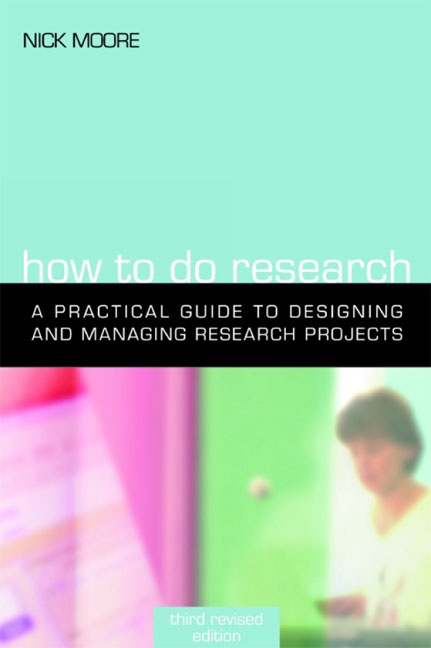Book contents
- Frontmatter
- Contents
- Acknowledgements
- Introduction: Types of research
- Part 1 The research process
- 1 Develop the research objectives
- 2 Design and plan the study
- 3 Write the proposal
- 4 Obtain financial support for the research
- 5 Manage the research
- 6 Draw conclusions and make recommendations
- 7 Write the report
- 8 Disseminate the results
- Part 2 Methods
- Appendix The market for information professionals: A proposal from the Policy Studies Institute
- Index
7 - Write the report
from Part 1 - The research process
Published online by Cambridge University Press: 09 June 2018
- Frontmatter
- Contents
- Acknowledgements
- Introduction: Types of research
- Part 1 The research process
- 1 Develop the research objectives
- 2 Design and plan the study
- 3 Write the proposal
- 4 Obtain financial support for the research
- 5 Manage the research
- 6 Draw conclusions and make recommendations
- 7 Write the report
- 8 Disseminate the results
- Part 2 Methods
- Appendix The market for information professionals: A proposal from the Policy Studies Institute
- Index
Summary
No research project is complete without some form of report. Without a report, the only people to benefit from the work are the researchers.
The nature of the report should be determined by the project itself and by the audience to which the report is addressed. Short projects carried out within an organization may simply be reported by means of a brief paper supported by an oral presentation. Academic research, on the other hand, is expected to result in lengthy dissertations which cover all aspects of the research and report on them in a rather formal, predetermined way. Between these two extremes there is considerable scope for variety.
Structure
Most reports, no matter what their size or formality, follow a common basic structure. You must say why the work was done, what events led up to it and what other work was relevant. You must state the aim and objectives and describe what you did in order to achieve the objectives. This leads you through to the results, the conclusions you draw from the results and then to the recommendations.
These elements represent a common basic framework that you can start with when planning the structure of your report. You will almost certainly have to deviate in some way from the basic structure but it will provide you with a starting point.
Building up an outline
The trick about writing good reports is to think things through in advance and to build up a structured outline before beginning the actual process of writing. Before you start writing the first paragraph you should know how many chapters the report will contain, what will be the main and subheadings within each chapter and what material will be put in appendices. You should know roughly how long the report will be and what it will look like at the end of the day. You should also have a very clear idea of the audience for which you are writing.
You should ask yourself what sort of people they are, what prior knowledge of the subject they will bring to the report, how long they are likely to spend looking at it and who they might pass the report on to.
Information
- Type
- Chapter
- Information
- How to Do ResearchA practical guide to designing and managing research projects, pp. 80 - 93Publisher: FacetPrint publication year: 2006
